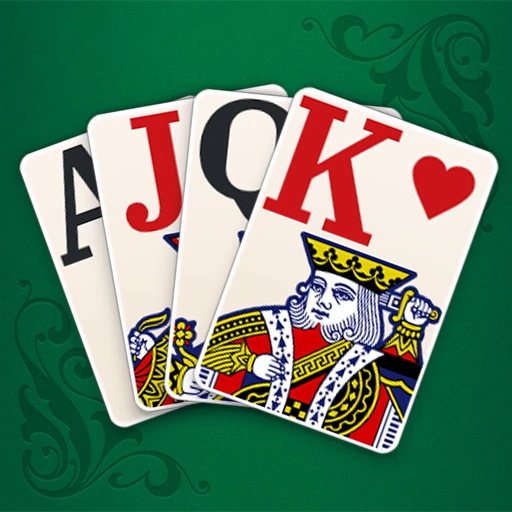 |
|
| Rating: 4.6 | Downloads: 1,000,000+ |
| Category: Card | Offer by: Ulpha Deep Labs |
Welcome to the intriguing world of “Classic Solitaire: Regal Card,” a beloved addition to the well-established genre of solitaire card games found on your device. Essentially a shuffle-and-solve puzzle game, it belongs to the strategy and casual gaming category, challenging players using standard decks arranged on the tableau or virtual tableau board. Players find it satisfying to peel back layers, clearing space by moving cards according to specific rules, aiming for a clean board while also typically seeking to build completed foundations, which makes the core mechanism deeply engaging for many solitaire enthusiasts.
Engage with “Classic Solitaire: Regal Card” in its visually clean interface, a stark contrast to many complex visuals but sufficient for its core function. Less a sprawling narrative-driven experience but a classic solitaire title, its appeal lies in the joyful focus it provides, the relaxing single-player mode, and the absorbing challenge of successfully arranging and moving cards according to ever unfolding patterns. The game offers a classic arcade-style appeal, designed primarily for quick, focused bursts of fun without demanding complex story arcs.
Gameplay and Features
- [Core Gameplay Loop]: The core of “Classic Solitaire: Regal Card” involves dealing cards face-up from a stock pile into ten tableau columns, initially seeded with one card each for columns 1-10, or sometimes with one or more cards, requiring specific card value (decreasing or increasing by one). Gameplay follows the standard Klondike solitaire rules: players move cards within the tableau based on descending order and alternating colors for higher-numbered columns, move any King to an empty tableau spot or tableau foundation (a specific pile intended for descending eights through Ace, As in Klondike). Clearing a tableau column requires moving all cards from that pile according to the rules.
- [Visuals or Art Style]: “Classic Solitaire: Regal Card” boasts a straightforward, clean design where individual card visuals might be basic but clear, card piles are distinct, and the interface is functionally minimalistic, highlighting the solitaire tableau and gameplay elements without excessive graphical flourishes. The use of jeweled pips or simple suits helps distinguish card face values clearly.
- [Modes or Levels]: Offers primarily single-player mode, usually based on one or more standard Klondike solitaire layouts, often utilizing a virtual stock pile and tableau foundations. While lacking hand-crafted levels, the game’s replayability hinges on the inherent randomness of card dealing via shuffle algorithms and the vastly different difficulty of each deal, encouraging numerous plays to beat one’s own high scores or clear 100% of possible boards. Some variations might involve different tableau setups or foundation rules.
- [Controls or Interface]: Gameplay typically involves tapping or clicking on cards to select them and a separate card destination area, pile, or foundation spot to move them, followed by automatically executing the move. The interface focuses on highlighting selected cards and valid move targets, ensuring very intuitive control even for quick gaming sessions.
- [Customization or Power-ups]: Customization options, particularly in free versions, might be limited to selecting different card back designs or visual themes (if offered), but typically, players rely on the standard rules and an optional built-in undo button for minor correction. Progression or power-ups usually come from higher-tier versions, offering more deals per session (Unlimited Draw) or hint assists, becoming more motivating for determined solitariests.
- [Any Special Systems]: Beyond standard gameplay, features like an Undo button for correction and a frequently included “Hint” assistance system are the main points of customization. These tools aim to help players overcome difficult spots without completely taking away the challenge, enhancing the overall puzzle-solving experience. Achievements or unlocking more challenging deck variations might also be present.
How to Play
Beginner’s Guide:
- Step 1: Download “Classic Solitaire: Regal Card” from your app store or website, install it on your device, and launch the app. Allow it to shuffle your virtual deck or offer a hint or shuffle option immediately. Familiarize yourself with selecting a card, seeing which area to place it.
- Step 2: Click on cards on the tableau columns to select them. To move a card, simply tap the card you wish to move and then tap the destination spot, which could be another spot on the tableau (following descending order/color rules), an empty tableau column, or a bottom card of a tableau foundation pile. Face-down cards under tableau piles have only one notification hint, often via a gold-on-black font.
- Step 3: Continue selecting and moving cards within the tableau, focusing on clearing piles and freeing up space. Move cards to the foundation piles as you build down from King to Ace, following the rules specific to that game mode. Your goal is to empty the tableau columns one by one until all cards have been successfully placed into the foundations.
Pro Tips:
- Work on control center cards (face-down cards completely under other cards): This is crucial for the endgame. Prioritize building sequences from cards exposed in the middle or at the bottom of the tableau columns.
- Watch for tableau foundation cards and columns reaching an empty state: Using your undo function if available, or carefully planning moves, prioritize clearing empty columns to allow for moving control cards to them or into the foundations.
- Analyze potential builds early in the game: Don’t rush to move cards willy-nilly. Plan potential sequences by seeing the potential relationship between face-up cards and tries to predict where a removed card can and should be placed.
Similar Games
| Game Title | Why It’s Similar |
|---|---|
| Zuma! – Zooba |
Zuma! games (Zooba included) feature rapidly advancing obstacles like colored stones or jewels that require strategic scoring in single-player rounds, sharing a single-player arcade core loop of pattern-solving under increasing pressure, though differing significantly visually and thematically from the traditional visual of “Classic Solitaire: Regal Card”. |
| Mahjong vs. Zombies |
Like many Mahjong titles, popular ones such as this one appeal to the same discerning players familiar with matching-based, strategy-driven arcade games on all app stores. They offer distinctly unique boards and visually stylized animation styles, similar to how “Classic Solitaire: Regal Card” focuses purely on one matching mechanism with clean visuals, while Mahjong offers different matching rules. |
| The Games Collection |
A compilation game gathering many top hits, popular indefinitely. If “Classic Solitaire: Regal Card” is well-received, similar compendiums will feature it prominently. Such collections offer a wide base to explore or challenge other variations of solitaire and classic Kinds games, providing directly comparable gameplay experiences, infinite replayability via randomized dealing, and consistent gaming appeal across different machine types. |
Frequently Asked Questions
Q: What basic strategy should I use when starting a game of “Classic Solitaire: Regal Card”?
A: A good starting strategy emphasizes patience and planning. Try to postpone moving cards (especially higher face cards or face-down kings) until you’re truly forced to move them, usually when attempting to free up space or clear a column. Exposed edges on the left side of a column can often reveal aces or deuces, worth moving immediately to build potential sequences.
Q: How do face-down cards typically work, and how can I control them faster in “Classic Solitaire: Regal Card”?
A: Face-down cards are usually indicated by a notice hint, often with a gold “g” on a black background, located on the information bar or top clue bar alongside typical tableau columns. Control is often automated during deal shuffles, but otherwise can be accessed by playing cards from above or on either end of the string, if arranged appropriately, though attempts might accidentally expose another control card first. Using the game’s “Undo” function allows caution.
Q: Are there different card drawing or deck sizes available throughout gameplay in the free version of “Classic Solitaire: Regal Card”?
A: Typically, the free version follows the classic Klondike solitaire style with a single standard 52-card deck. Players draw one card at a time from the stock pile using an optional stock draw button, subject to immediate display or via a “holds” feature. Solitaires focused on concurrent control variations might use virtual stock draws; game modes with faster scoring or multiple decks are more common in paid versions.
Q: If I get stuck on a deal in “Classic Solitaire: Regal Card,” how can I get some help or continue playing this solitaire game? Is there level progression? No different challenges? No original game mode to play?
A: If you find you can’t make a legal move and are needing hints, use the dedicated “Hint” system often found; this can be invaluable for complex or nearly unsolvable control cards. There usually remains no level progression or different challenges beyond a random shuffle reshuffle. Focus instead on not losing too many cards or utilizing the built-in tools.
Q: Where can I find “Classic Solitaire: Regal Card” on my device? Is it available on other platforms like Steam with a keyboard version or in an HTML5 version for older web browser games?
A: You can easily find “Classic Solitaire: Regal Card” in your device’s app store (the App Store, Google Play Store, etc.) if you’re on a mobile phone or tablet. Search online for its official website to download it. While Steam might host or use a particular version, a common web browser version is not standard, but many apps offer HTML5 compatibility for browser play.
Screenshots
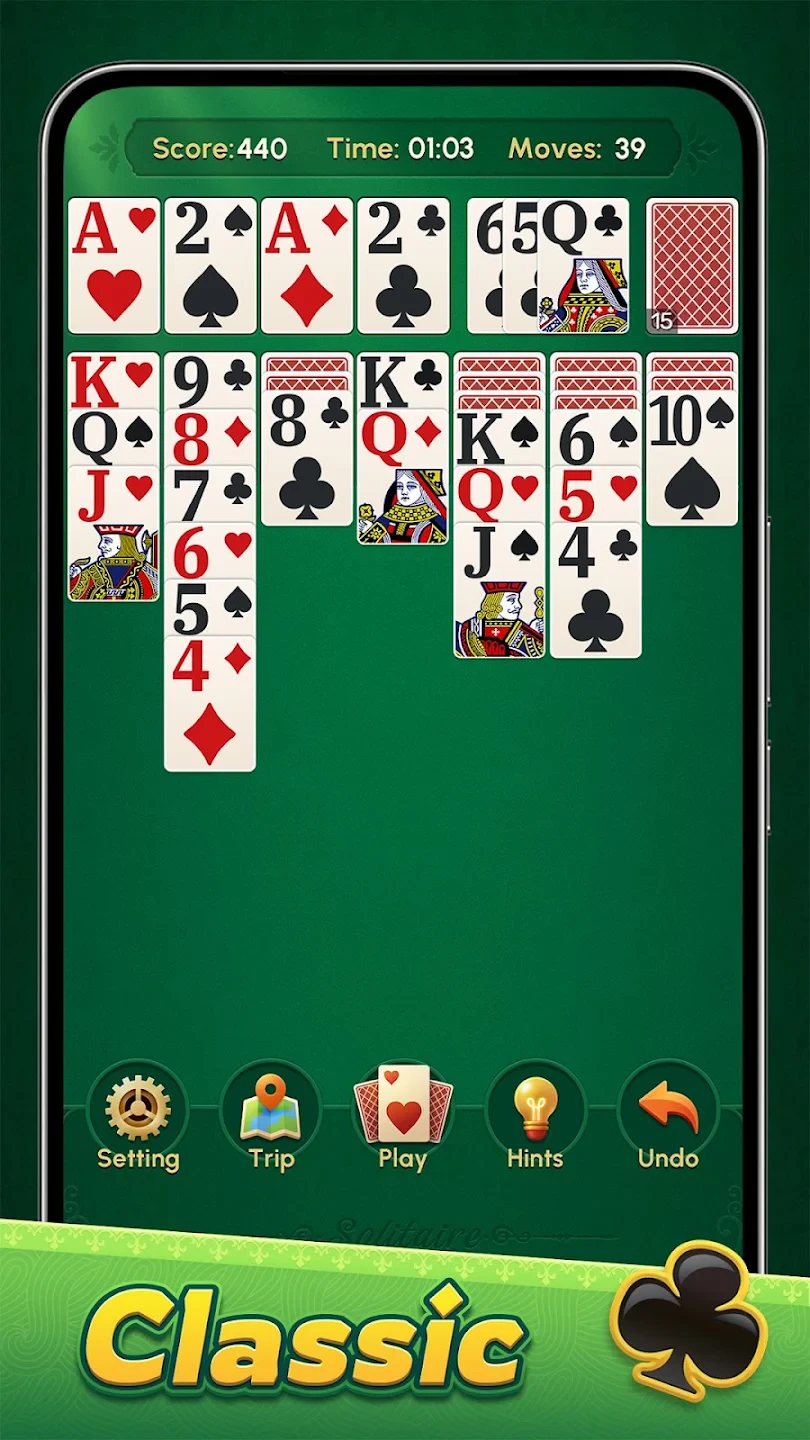 |
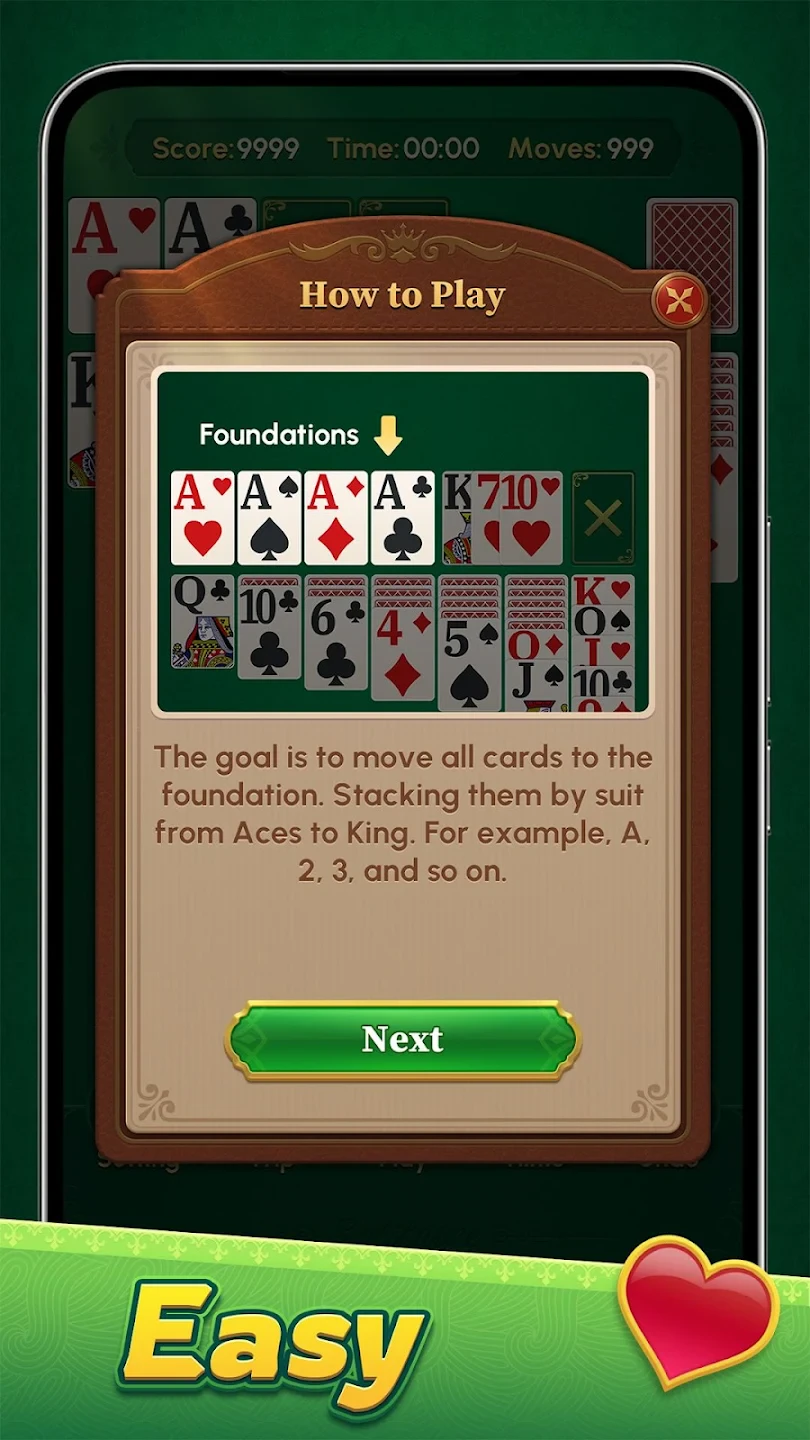 |
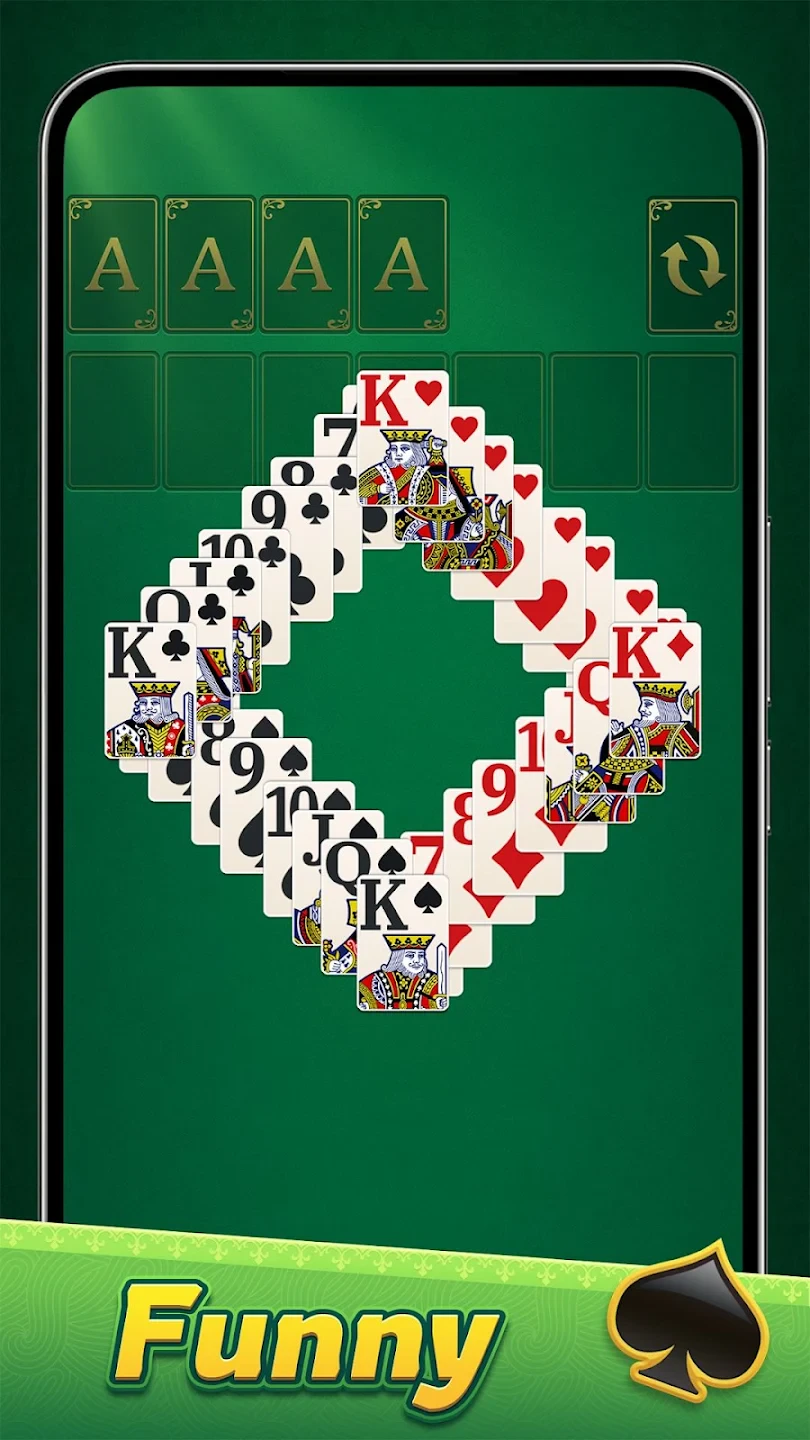 |
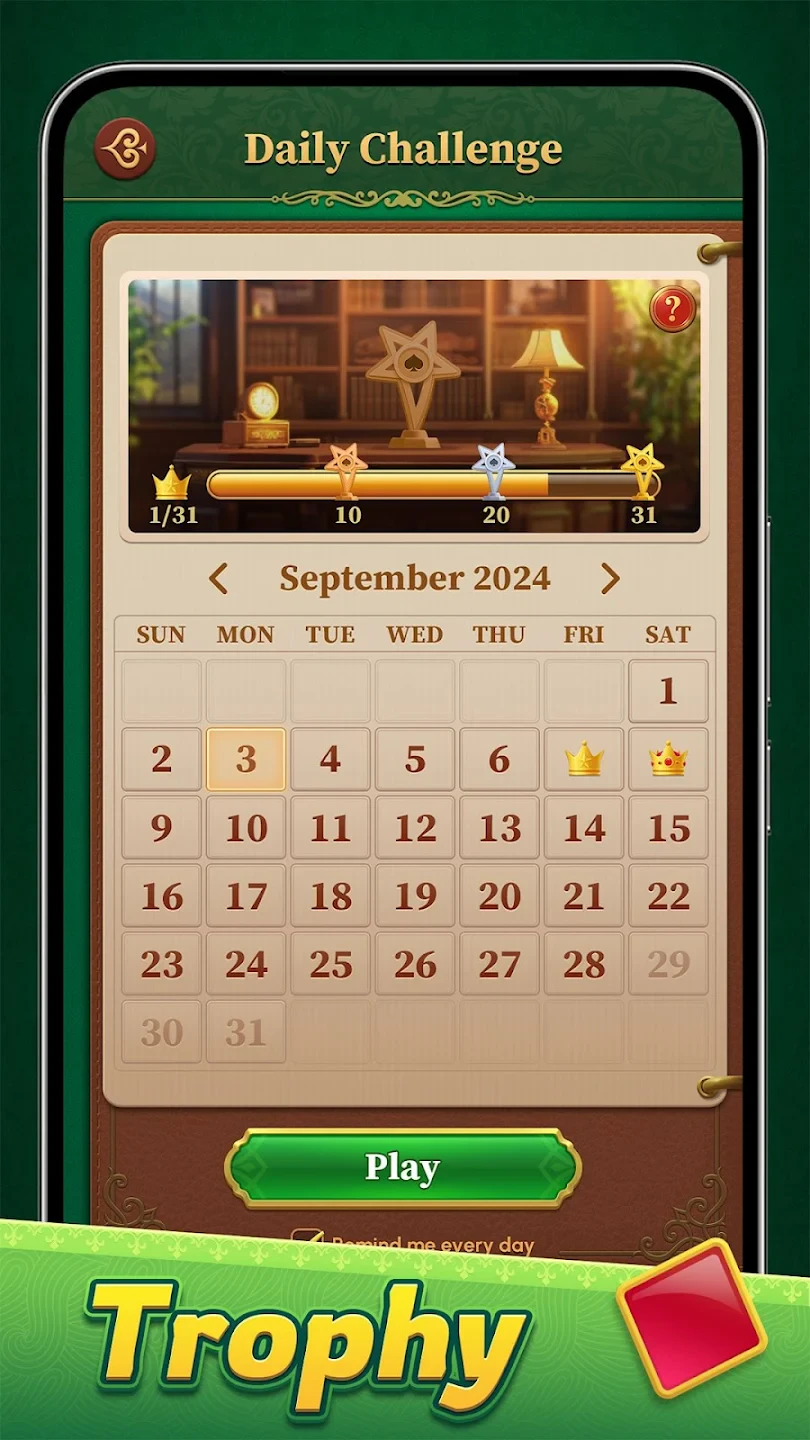 |
